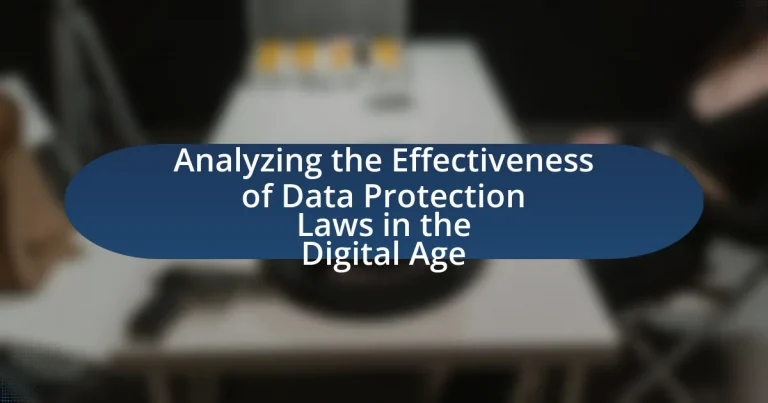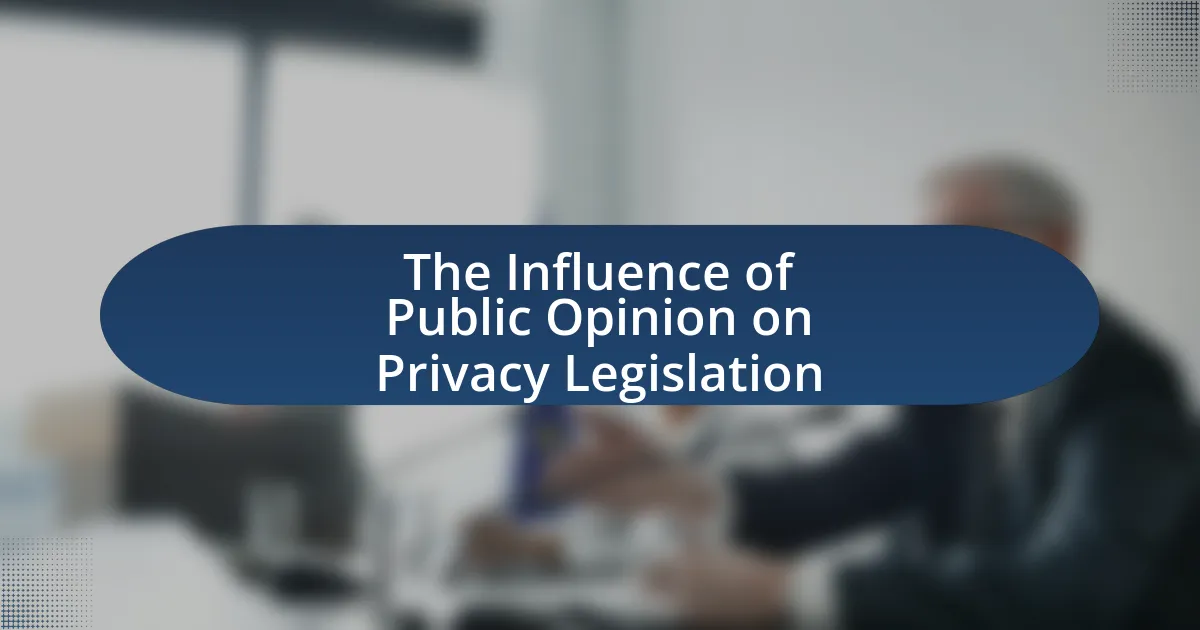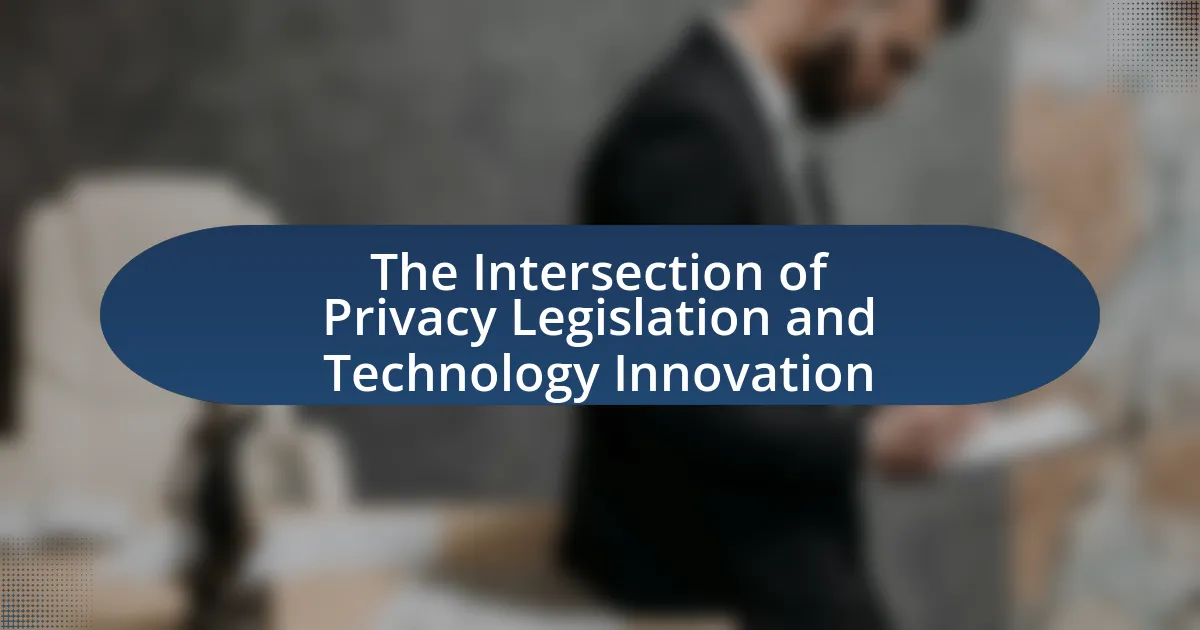Data protection laws in the digital age are essential legal frameworks aimed at safeguarding personal information collected by organizations. This article analyzes the effectiveness of these laws, particularly focusing on the General Data Protection Regulation (GDPR) and its global implications. It explores how data protection laws evolve with technological advancements, the historical events that shaped their development, and the challenges they face in enforcement. Additionally, the article discusses the risks individuals encounter without adequate protections, the role of public awareness, and best practices organizations can adopt to ensure compliance. Ultimately, it highlights the need for continuous adaptation of data protection laws to address emerging technologies and maintain consumer trust in an increasingly digital landscape.
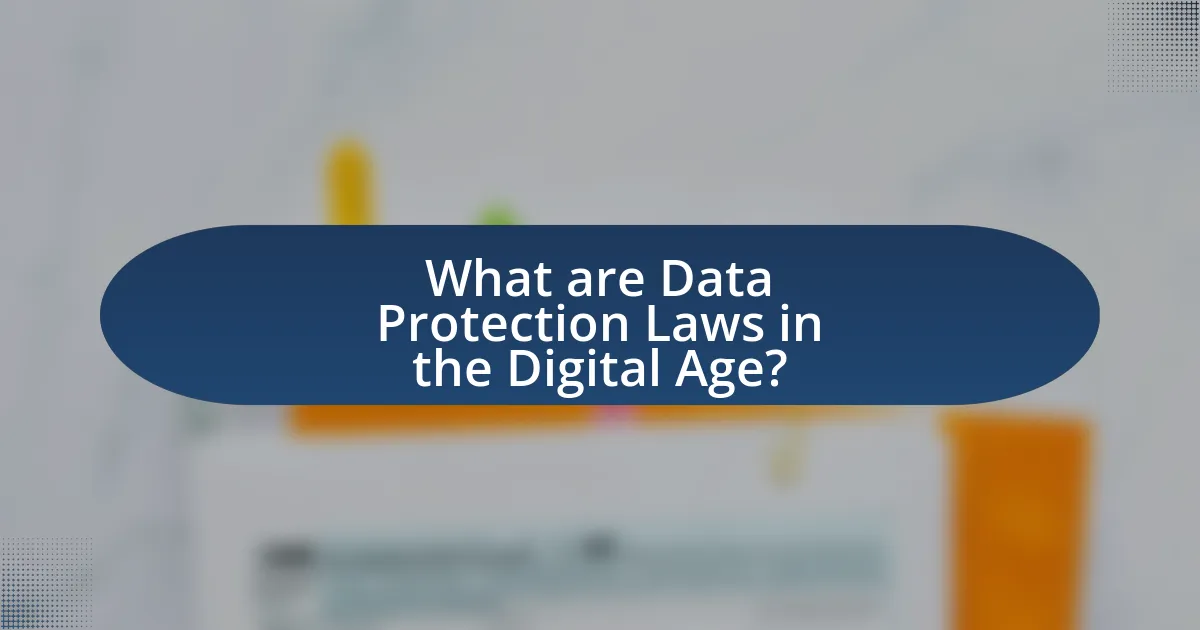
What are Data Protection Laws in the Digital Age?
Data protection laws in the digital age are legal frameworks designed to safeguard personal information collected, processed, and stored by organizations. These laws, such as the General Data Protection Regulation (GDPR) in the European Union, establish rights for individuals regarding their data, including the right to access, rectify, and erase personal information. The effectiveness of these laws is evidenced by their ability to impose significant penalties on organizations that fail to comply, with GDPR fines reaching up to 4% of annual global turnover or €20 million, whichever is higher. Additionally, these regulations promote transparency and accountability, requiring organizations to implement data protection measures and report breaches promptly.
How do Data Protection Laws evolve with technology?
Data protection laws evolve with technology through continuous updates and adaptations to address emerging digital threats and innovations. As technology advances, such as the rise of artificial intelligence and big data analytics, lawmakers recognize the need to revise existing regulations to ensure they remain relevant and effective. For instance, the General Data Protection Regulation (GDPR), implemented in the European Union in 2018, was designed to enhance privacy rights and impose stricter controls on data processing, reflecting the growing concerns over data breaches and misuse in a digital landscape. This evolution is further evidenced by ongoing legislative efforts worldwide, such as California’s Consumer Privacy Act (CCPA), which aims to provide consumers with greater control over their personal information in response to the increasing prevalence of online data collection practices.
What historical events influenced the development of Data Protection Laws?
The development of Data Protection Laws was significantly influenced by historical events such as the rise of computer technology in the 1960s and 1970s, which led to increased concerns about personal data privacy. The establishment of the first data protection law in Sweden in 1973 marked a pivotal moment, as it set a precedent for other countries. Additionally, the 1981 Council of Europe Convention 108 aimed to protect individuals against abuses related to personal data processing, further shaping international standards. The emergence of the internet in the 1990s and subsequent data breaches, such as the 2007 TJX Companies breach, highlighted vulnerabilities and prompted legislative responses like the European Union’s General Data Protection Regulation (GDPR) in 2018, which reinforced data protection principles globally. These events collectively underscore the evolving landscape of data protection in response to technological advancements and societal demands for privacy.
How do technological advancements challenge existing Data Protection Laws?
Technological advancements challenge existing Data Protection Laws by outpacing their regulatory frameworks, leading to gaps in legal protections. For instance, the rise of artificial intelligence and big data analytics allows for unprecedented data collection and processing, often without explicit consent from individuals, which contradicts principles established in laws like the General Data Protection Regulation (GDPR). Additionally, the rapid evolution of technologies such as blockchain and the Internet of Things (IoT) complicates the enforcement of data minimization and purpose limitation principles, as these technologies often operate in decentralized and opaque environments. This misalignment between technology and regulation creates vulnerabilities for personal data, as evidenced by the increasing number of data breaches and privacy violations reported annually, highlighting the urgent need for legal frameworks to adapt to technological realities.
Why are Data Protection Laws essential in today’s digital landscape?
Data Protection Laws are essential in today’s digital landscape because they safeguard individuals’ personal information from misuse and unauthorized access. With the exponential growth of data generation and collection, these laws establish a framework that mandates organizations to handle personal data responsibly, ensuring transparency and accountability. For instance, the General Data Protection Regulation (GDPR) implemented in the European Union has set stringent requirements for data processing, leading to increased consumer trust and a reduction in data breaches. According to a report by the International Association of Privacy Professionals, organizations that comply with data protection laws experience 30% fewer data breaches, highlighting the effectiveness of these regulations in enhancing data security.
What risks do individuals face without adequate Data Protection Laws?
Individuals face significant risks without adequate Data Protection Laws, including identity theft, unauthorized data access, and privacy violations. The absence of robust legal frameworks allows malicious actors to exploit personal information, leading to financial loss and reputational damage. For instance, the Identity Theft Resource Center reported over 1,100 data breaches in 2020 alone, exposing millions of records. Additionally, without stringent regulations, companies may mishandle or misuse personal data, resulting in a lack of accountability and trust. This environment fosters a culture of surveillance and exploitation, where individuals have little control over their personal information.
How do Data Protection Laws protect consumer rights?
Data Protection Laws protect consumer rights by establishing regulations that govern the collection, storage, and use of personal data. These laws grant consumers rights such as access to their data, the ability to correct inaccuracies, and the right to request deletion of their information. For instance, the General Data Protection Regulation (GDPR) in the European Union mandates that organizations must obtain explicit consent from consumers before processing their personal data, ensuring that individuals have control over their information. Additionally, these laws impose penalties on organizations that fail to comply, thereby incentivizing businesses to prioritize consumer privacy and data security.
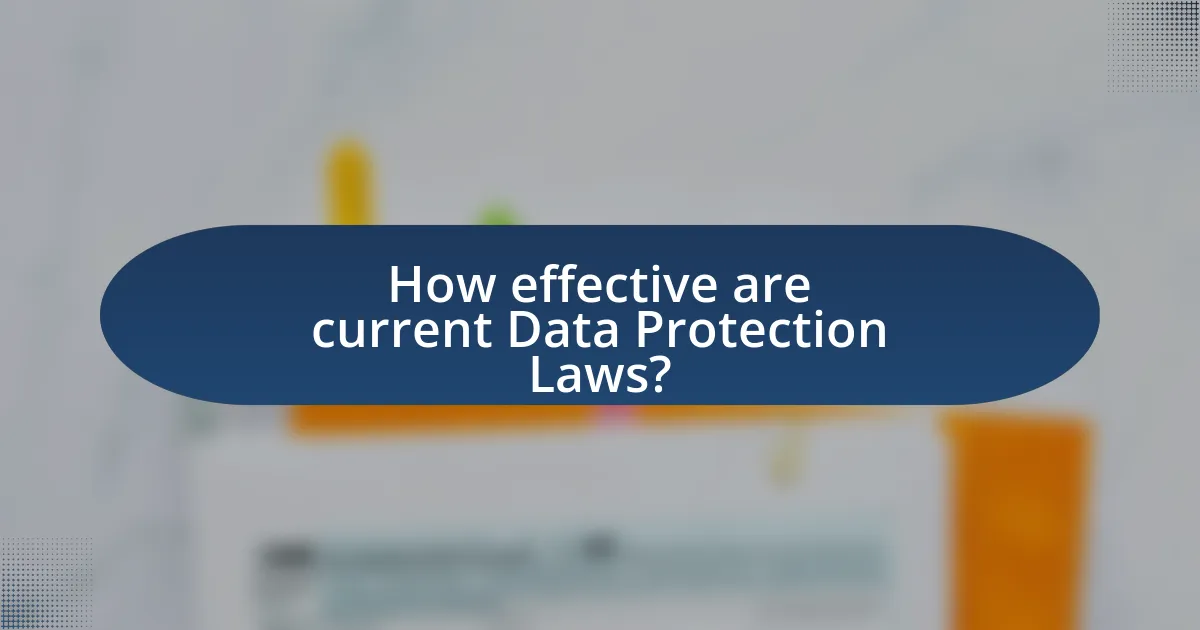
How effective are current Data Protection Laws?
Current Data Protection Laws are moderately effective, as they provide frameworks for safeguarding personal data but face challenges in enforcement and adaptation to rapid technological changes. For instance, the General Data Protection Regulation (GDPR) in the European Union has significantly increased accountability for organizations handling personal data, leading to a reported 66% increase in data breach notifications since its implementation in 2018. However, enforcement varies across member states, and many organizations still struggle with compliance due to the complexity of the regulations. Additionally, the rise of new technologies, such as artificial intelligence and big data analytics, often outpaces the legislative updates, creating gaps in protection. Thus, while current laws have made strides in data protection, their effectiveness is hindered by inconsistent enforcement and the need for continual adaptation to evolving digital landscapes.
What metrics are used to measure the effectiveness of Data Protection Laws?
Metrics used to measure the effectiveness of Data Protection Laws include compliance rates, incident response times, data breach statistics, and user trust levels. Compliance rates indicate how well organizations adhere to regulations, while incident response times reflect the efficiency of organizations in addressing data breaches. Data breach statistics provide insight into the frequency and severity of breaches, and user trust levels gauge public confidence in data protection measures. These metrics collectively help assess the impact and success of data protection legislation in safeguarding personal information.
How do enforcement actions impact the effectiveness of these laws?
Enforcement actions significantly enhance the effectiveness of data protection laws by ensuring compliance and deterring violations. When regulatory bodies actively impose penalties for non-compliance, organizations are more likely to adhere to legal standards, thereby fostering a culture of accountability. For instance, the General Data Protection Regulation (GDPR) has seen substantial fines levied against companies, such as the €50 million fine imposed on Google by the French data protection authority in 2019 for failing to provide transparent information to users. This not only reinforces the importance of data protection but also encourages other organizations to prioritize compliance to avoid similar repercussions. Thus, the presence of enforcement actions directly correlates with improved adherence to data protection laws.
What role do public awareness and education play in the effectiveness of Data Protection Laws?
Public awareness and education are crucial for the effectiveness of Data Protection Laws as they empower individuals to understand their rights and responsibilities regarding personal data. When the public is informed about data protection regulations, they are more likely to exercise their rights, report violations, and demand accountability from organizations. For instance, a study by the European Union Agency for Fundamental Rights in 2020 found that increased public awareness led to higher compliance rates among businesses with the General Data Protection Regulation (GDPR). This correlation demonstrates that informed citizens can significantly enhance the enforcement and impact of data protection laws.
What challenges do Data Protection Laws face in enforcement?
Data Protection Laws face significant challenges in enforcement due to jurisdictional issues, technological advancements, and resource limitations. Jurisdictional issues arise because data often crosses international borders, complicating the application of national laws. For instance, the General Data Protection Regulation (GDPR) applies to entities outside the EU if they process data of EU citizens, leading to enforcement difficulties when non-compliant entities are located in countries with weaker data protection laws. Technological advancements, such as the use of artificial intelligence and big data analytics, outpace regulatory frameworks, making it hard for laws to keep up with new methods of data processing and potential misuse. Additionally, resource limitations hinder enforcement agencies from effectively monitoring compliance and investigating violations, as seen in various reports indicating that many data protection authorities operate with insufficient funding and staffing to handle the volume of complaints and breaches.
How do jurisdictional differences affect the enforcement of Data Protection Laws?
Jurisdictional differences significantly impact the enforcement of Data Protection Laws by creating varying legal frameworks and compliance requirements across regions. For instance, the European Union’s General Data Protection Regulation (GDPR) imposes strict obligations on data controllers and processors, including hefty fines for non-compliance, while the United States has a more fragmented approach with sector-specific regulations like HIPAA for health data and CCPA for consumer privacy. This disparity leads to challenges for multinational companies that must navigate multiple legal standards, potentially resulting in inconsistent data protection practices. Furthermore, enforcement mechanisms differ; EU regulators have the authority to impose penalties across member states, whereas U.S. enforcement relies on individual state laws and federal agencies, which can lead to uneven application of data protection standards.
What are the common loopholes in Data Protection Laws that hinder enforcement?
Common loopholes in Data Protection Laws that hinder enforcement include vague definitions of personal data, lack of jurisdictional clarity, and insufficient penalties for non-compliance. Vague definitions can lead to inconsistent interpretations, making it difficult for regulators to enforce laws effectively. For instance, the General Data Protection Regulation (GDPR) has faced challenges due to ambiguities in terms like “consent” and “legitimate interest,” which can be exploited by organizations. Additionally, jurisdictional issues arise when data is processed across borders, complicating enforcement as different countries may have varying regulations. Lastly, inadequate penalties fail to deter violations; for example, fines may be too low to impact large corporations, leading to a lack of accountability. These factors collectively undermine the effectiveness of data protection laws in safeguarding personal information.
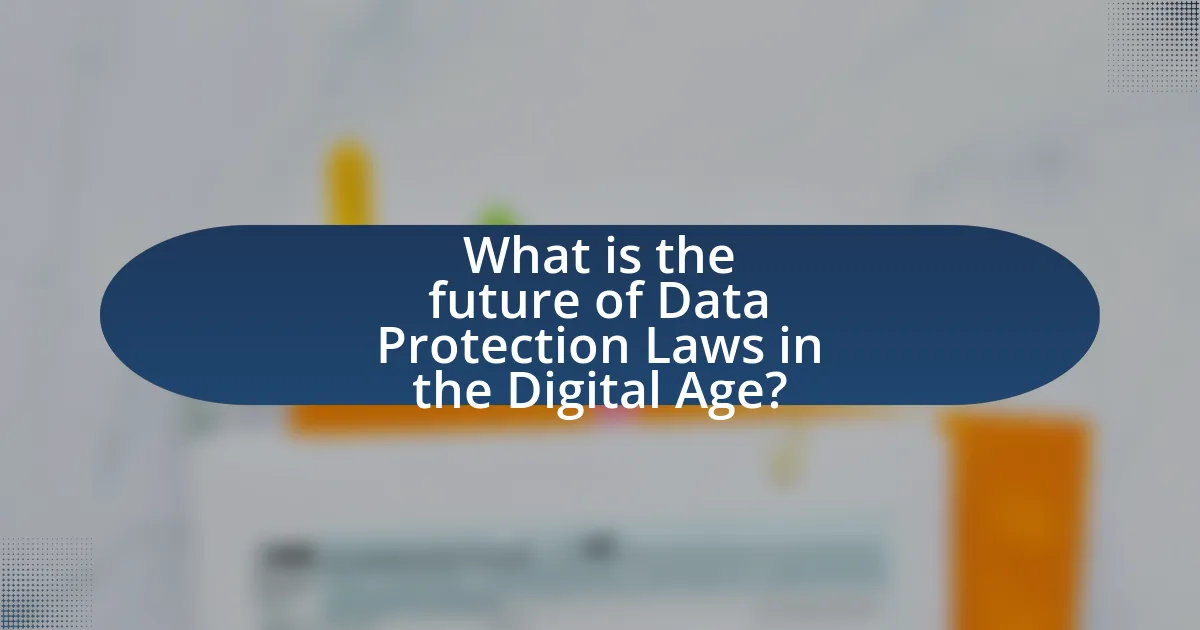
What is the future of Data Protection Laws in the Digital Age?
The future of Data Protection Laws in the Digital Age is likely to involve more stringent regulations and a focus on individual rights. As technology evolves, particularly with advancements in artificial intelligence and data analytics, lawmakers are expected to enhance existing frameworks like the General Data Protection Regulation (GDPR) to address emerging challenges. For instance, the increasing prevalence of data breaches and privacy violations has prompted calls for stronger enforcement mechanisms and penalties for non-compliance. Additionally, global cooperation on data protection standards is anticipated, as seen in initiatives like the OECD’s Privacy Guidelines, which aim to harmonize regulations across borders. This evolution reflects a growing recognition of the importance of safeguarding personal data in an interconnected world.
How might emerging technologies influence future Data Protection Laws?
Emerging technologies will significantly influence future Data Protection Laws by necessitating more robust frameworks to address new privacy challenges. As technologies like artificial intelligence, blockchain, and the Internet of Things evolve, they create complex data processing scenarios that existing laws may not adequately cover. For instance, AI systems often require vast amounts of personal data for training, raising concerns about consent and data minimization principles. Additionally, blockchain’s immutable nature complicates the right to erasure, a key component of many data protection regulations. These challenges will likely prompt lawmakers to revise current legislation, such as the General Data Protection Regulation (GDPR), to ensure that it remains relevant and effective in safeguarding personal data in an increasingly digital landscape.
What role will artificial intelligence play in shaping Data Protection Laws?
Artificial intelligence will play a crucial role in shaping Data Protection Laws by enhancing compliance monitoring and risk assessment processes. AI technologies can analyze vast amounts of data to identify potential breaches and ensure adherence to regulations, thereby improving the effectiveness of data protection measures. For instance, AI-driven tools can automate the detection of unauthorized data access, which aligns with the requirements of laws like the General Data Protection Regulation (GDPR) that mandate organizations to protect personal data. Furthermore, AI can assist in the development of more adaptive legal frameworks by providing insights into emerging data privacy challenges, thus enabling lawmakers to create regulations that are responsive to technological advancements.
How can Data Protection Laws adapt to the rise of the Internet of Things?
Data protection laws can adapt to the rise of the Internet of Things (IoT) by incorporating specific regulations that address the unique challenges posed by interconnected devices. These laws can establish clear guidelines for data collection, consent, and user privacy, ensuring that individuals have control over their personal information generated by IoT devices. For instance, the General Data Protection Regulation (GDPR) in Europe already includes provisions that can be applied to IoT, such as the requirement for explicit consent before data processing and the right to data portability. Additionally, laws can mandate that manufacturers implement robust security measures to protect data from breaches, as IoT devices often have vulnerabilities that can be exploited. By continuously updating legal frameworks to reflect technological advancements and promoting transparency in data handling practices, data protection laws can effectively safeguard user privacy in the evolving landscape of IoT.
What best practices can organizations adopt to comply with Data Protection Laws?
Organizations can adopt several best practices to comply with Data Protection Laws, including implementing robust data governance frameworks, conducting regular data protection impact assessments, and ensuring employee training on data privacy. A strong data governance framework establishes clear policies and procedures for data handling, which is essential for compliance. Regular data protection impact assessments help identify and mitigate risks associated with data processing activities, aligning with requirements set forth by regulations such as the General Data Protection Regulation (GDPR). Furthermore, training employees on data privacy ensures that all staff members understand their responsibilities regarding data protection, which is critical for maintaining compliance and safeguarding personal information.
How can organizations implement effective data governance frameworks?
Organizations can implement effective data governance frameworks by establishing clear policies, assigning roles and responsibilities, and utilizing technology for data management. Clear policies define data ownership, usage, and compliance requirements, ensuring that all stakeholders understand their obligations. Assigning specific roles, such as data stewards and governance committees, facilitates accountability and oversight. Additionally, leveraging technology, such as data cataloging tools and compliance software, enhances data visibility and management efficiency. According to a 2021 survey by the Data Governance Institute, organizations with structured data governance frameworks reported a 30% improvement in data quality and compliance adherence.
What training and resources are necessary for compliance with Data Protection Laws?
Compliance with Data Protection Laws requires comprehensive training programs and access to relevant resources. Organizations must implement training that covers the principles of data protection, legal obligations, and best practices for data handling. This training should include modules on the General Data Protection Regulation (GDPR), data breach response, and privacy impact assessments. Additionally, resources such as data protection policies, guidelines, and access to legal counsel are essential for ensuring compliance. According to the European Data Protection Board, effective training and resources significantly reduce the risk of non-compliance and enhance an organization’s ability to protect personal data.
